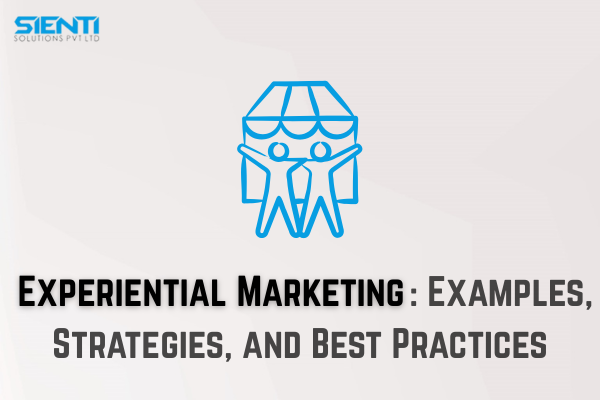Experiential Marketing: Examples, Strategies, and Best PracticesJune 25 ,2025

Experiential Marketing: Examples, Strategies, and Best Practices
In the world of advertising, people are bombarded with digital content every day. So how do brands cut through the noise? The answer is Experiential Marketing — a strategy that creates memorable and emotional connections through real-life brand experiences.
This blog will help beginners understand what experiential marketing is, explore some creative examples, go through effective strategies, and learn best practices to implement it successfully.
What Is Experiential Marketing?
Experiential marketing (also known as engagement marketing or live marketing) is a strategy where brands interact directly with their consumers to create memorable experiences. It’s not just about showing a product — it’s about letting people feel, touch, taste, or engage with a brand in a unique way.
Key Features:
-
Interactive
-
Emotionally engaging
-
Often event-based or real-world driven
-
Focused on customer experience rather than direct selling
Why Experiential Marketing Works
-
Emotional Connection: People remember experiences longer than ads.
-
Word-of-Mouth: Happy participants often share their experiences on social media.
-
Customer Loyalty: Memorable experiences turn customers into brand advocates.
-
Content Creation: Brands get authentic content from the audience’s participation.
Real-Life Examples of Experiential Marketing
1. Coca-Cola’s “Happiness Machine”
Coca-Cola placed a vending machine in a college and surprised students with not just a Coke, but also flowers, pizzas, and more. The campaign went viral, highlighting joy and generosity — key values of the brand.
2. Nike’s Run Club
Nike organizes free running clubs and pop-up events in cities worldwide. These events allow people to test their gear, meet fellow runners, and associate the brand with fitness and community.
3. IKEA’s Sleepover
In the UK, IKEA hosted a sleepover event inside its showroom for customers. It generated buzz and made people feel more emotionally connected to the brand’s idea of “home.”
Strategies to Run Successful Experiential Campaigns
1. Know Your Audience
Understand what kind of experiences your target audience values. Millennials might love tech activations; families may enjoy interactive events.
2. Set a Clear Goal
Are you launching a new product? Building brand awareness? Focus your experience around a specific objective.
3. Integrate Technology
Use AR/VR, QR codes, or smart devices to make experiences more immersive and measurable.
4. Encourage Social Sharing
Design your event to be Instagram-worthy. Branded hashtags, photo booths, and live streaming help boost online visibility.
5. Collect Feedback
Use surveys or interactive kiosks to understand the impact of your campaign and improve future efforts.
Best Practices for Experiential Marketing
-
Keep the experience authentic and in line with your brand message.
-
Plan logistics thoroughly — location, crowd control, and permissions are key.
-
Train your event staff to communicate the brand story effectively.
-
Always have a follow-up strategy — email campaigns, offers, or retargeting.
-
Make it measurable — track attendance, engagement rates, and social impressions.
Conclusion
Experiential marketing is more than just a buzzword — it’s a powerful way to connect with your audience on a deeper, emotional level. Whether you’re a startup launching a new product or a big brand trying to strengthen customer loyalty, experiential marketing helps you stand out in the crowded digital space.
To execute experiential campaigns that truly make an impact, you need the right team by your side. If you’re looking to transform your brand with creative and immersive marketing strategies, connect with the best digital marketing agency Kochi to get started today.


_(1)1.jpg)